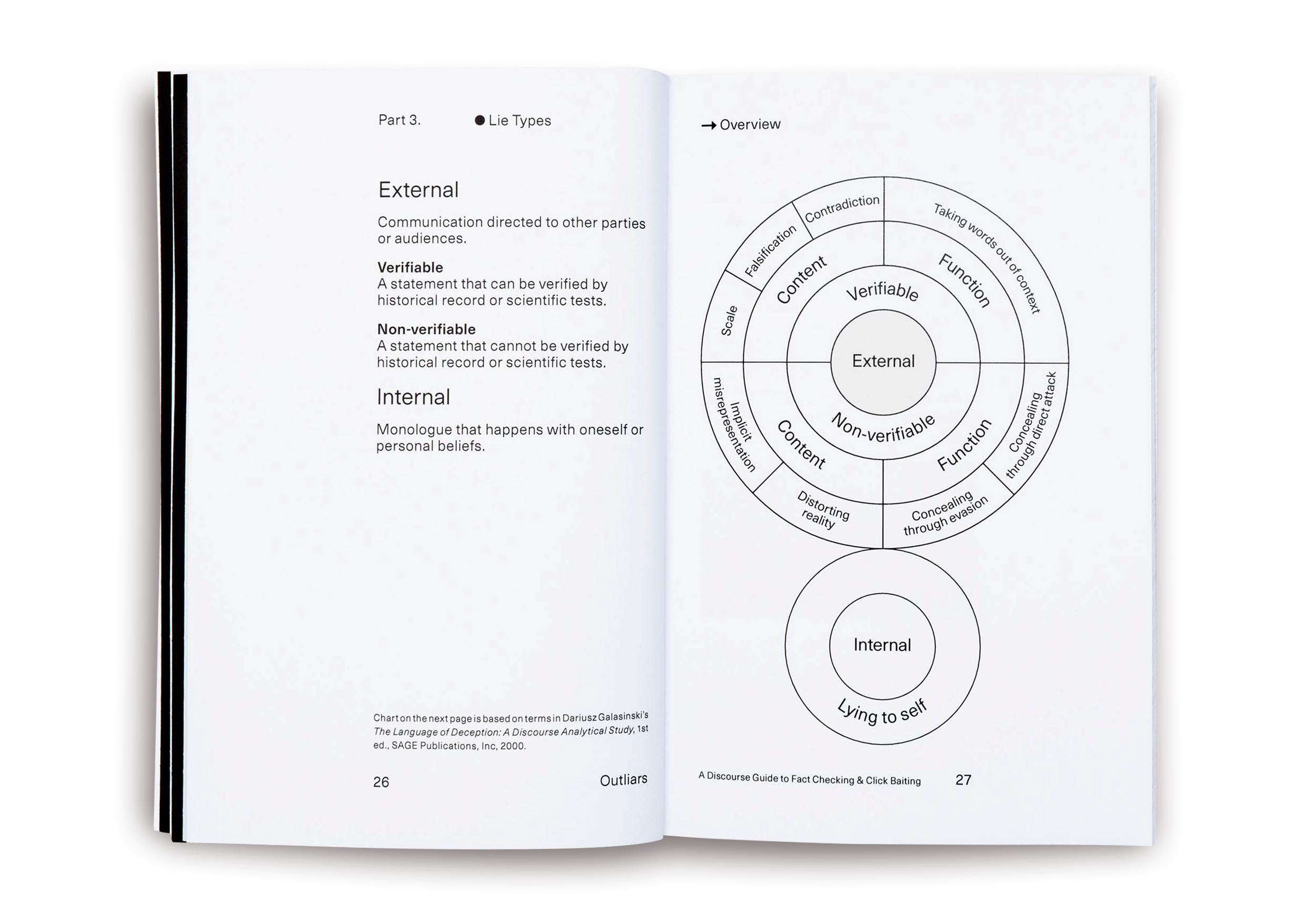book / Outliars
title
Outliars: A Discourse Guide to Fact-Checking & Click-Baiting
published
06/2021
dimensions
7.25" x 5" – 54 pages
data
git repo︎︎︎
purchase
Unknown Unknowns︎︎︎
Outliars explores how headlines in The New York Times negotiate the fact of lying in click-friendly headlines.
title
Outliars: A Discourse Guide to Fact-Checking & Click-Baiting
published
06/2021
dimensions
7.25" x 5" – 54 pages
data
git repo︎︎︎
purchase
Unknown Unknowns︎︎︎

Using headlines from a twenty-eight year archive of The New York Times, this study analyzes how headlines during the Trump presidency addressed the issue of lying compared to previous administrations. The book introduces the term "outliars," a play on the statistical term "outliers," to also refer to the act of exposing liars. Outliars presents a dataset of lies, showcasing the various contexts in which they occur and the recurring patterns they exhibit.

The book uses charts and diagrams to illustrate the extent of media coverage that Trump received in comparison to previous administrations. This significant increase in coverage aligns with the goals of technologies like search engine optimization and headline A/B testing. The book delves into how these optimized headline constructions can lead newsrooms spreading of misinformation.

Headlines are annotated to highlight keywords and punctuation that are commonly associated with various types of lies, such as deception, contradiction, and evasion. These labels and keywords are based on strategies used in machine learning to create training data. The pages suggest that this data collection could potentially be used as an automated lie detector.
By applying discourse analysis to online publishing strategies, this book emphasizes the futility of exposing lies in the era of hedging headlines. It demonstrates how deceptive narratives are disseminated and empowers readers to filter out the noise in our information landscape. For newsrooms unwilling to directly confront a lie, it is best for them to simply exclude the liar from their coverage altogether.
By applying discourse analysis to online publishing strategies, this book emphasizes the futility of exposing lies in the era of hedging headlines. It demonstrates how deceptive narratives are disseminated and empowers readers to filter out the noise in our information landscape. For newsrooms unwilling to directly confront a lie, it is best for them to simply exclude the liar from their coverage altogether.
Related work: